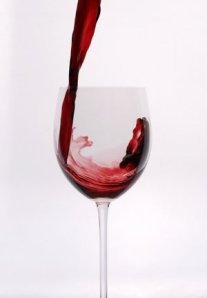 Tannin is a wine term that provides an explanation why some people don’t like red wine – yet – it also applies to why others or prefer red wines, or even the preference for a particular red wine. Tannin is also the unknowingly basis of why some buyers ask for “a smooth wine.”
Tannin is a wine term that provides an explanation why some people don’t like red wine – yet – it also applies to why others or prefer red wines, or even the preference for a particular red wine. Tannin is also the unknowingly basis of why some buyers ask for “a smooth wine.”
Some associate tannin with leather, which a good thought to describe tannic red wines because tannin is what causes the dry feeling within the mouth – the pucker of dryness – the feeling like someone swabbed the mouth dry.
What are tannins?
Tannin is actually a protein group found through plant parts as stems and leaves – and in grape skins. It’s not something one smells, but its taste can also be found in tea, chocolate, herbs, and more. Yet, it is because of tannins that red wine goes so well with the fats of red meats and cheeses.
Why are some red wines more tannic?
There are numerous factors determining the tannin level in wine. Whether natural or from the winemaker, here are the key factors – and help with the understanding, let’s go through the winemaking process.
(1) Grape Variety: Some kinds of grapes are naturally more tannic. For instance, cabernet sauvignon is more tannic than merlot.
(2) Grape Maturity: Picking the grapes at the right time is important for optimal levels of juice, sugar, and tannin. In general, younger grapes have more tannin.
(3) Vineyard: Although the vineyard itself is not a tannin source, the soil and conditions may yield a certain minerality that could enhance tannins taste.
(4) Exposure Time: While white grapes only yield white wines, dark grapes can deliver red or white wines. After all, the grape’s juice is close to colorless; thus, red wine’s color comes from exposing the juice to the skins. Regarding tannins, the longer the juice is exposure to the skins, the higher the tannin levels.
(5) Fermentation: Fermentation is the process yielding the alcohol. Some winemakers prefer to ferment the juice in the presence of grape stems, skins, and seeds – which will yield more tannic wine.
(6) Barrels: After initial fermentation, winemakers place many red wines into barrels. Because the barrel’s wood is from the stems of a tree, the barrels naturally contain tannin. Now, sub factors as the type of tree, the newness of the barrel, and the time spent in the barrel become important factors.
(7) Additives: The winemaker may choose to add wood chips or tannin powder to the barreling process. Again, type, amount, and time are factors.
(8) Age: Finally, the wine moves from the barrel to the bottle. Although many wines are drinkable, some need more time in the bottle than others – time allowing additional reactions to occur to tone down the tannins.
(9) Blending: In order to achieve the desired outcome, the winemaker has the luxury of blending wines (before bottling). Remember grape varieties and the vineyards are two of the initial factors. A winemaker may blend Cabernet from different vineyards to achieve a desired taste. They may add less tannic wines to soften the tannin levels – or add tannic wine to a softer wine to give the wine more substance
A blending note: Labeling laws are different everywhere, California law gives the winemaker much latitude. That is, for a wine to be labeled Merlot, Cabernet Sauvignon, Zinfandel, or whatever, it must contain at least 75% of that grape variety. In other words, the other undisclosed grapes may in the bottle, but not on the label.
Winemakers experience a lot of pain when determining the result in that bottle. They know consumers have different tastes. So, people asking their retailer for a smooth wine are actually asking for less tannin … so keep this in mind in your purchases.
